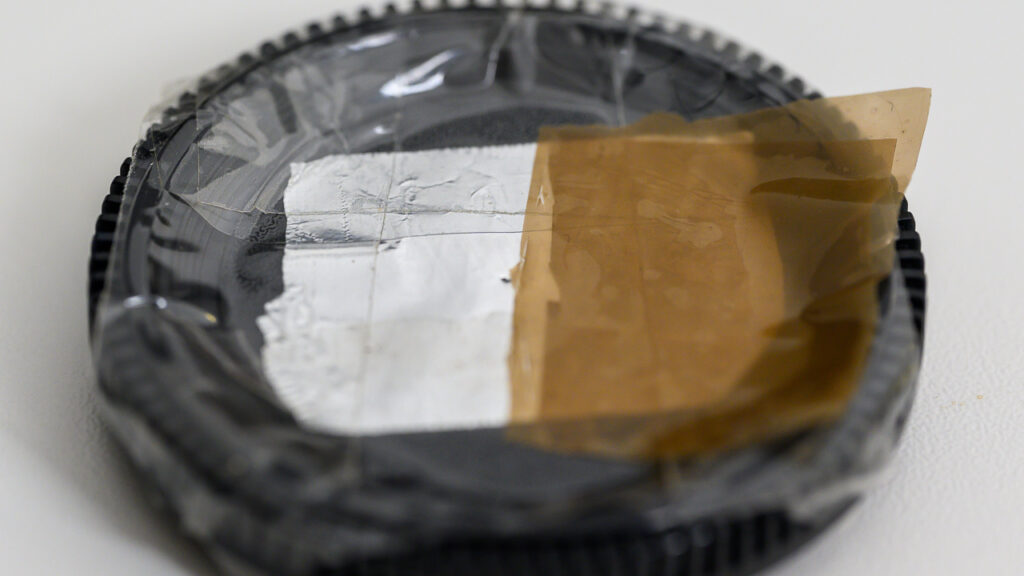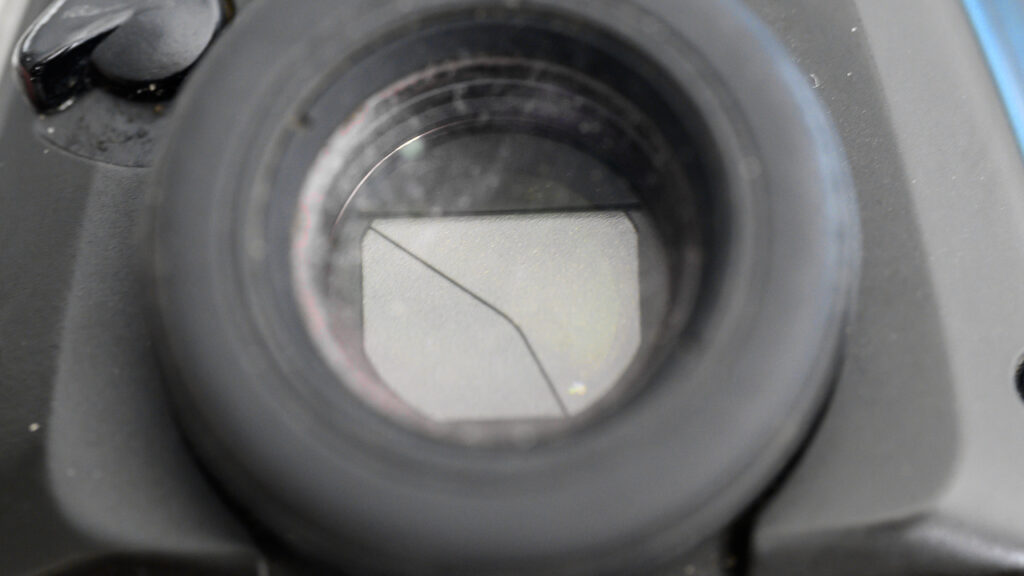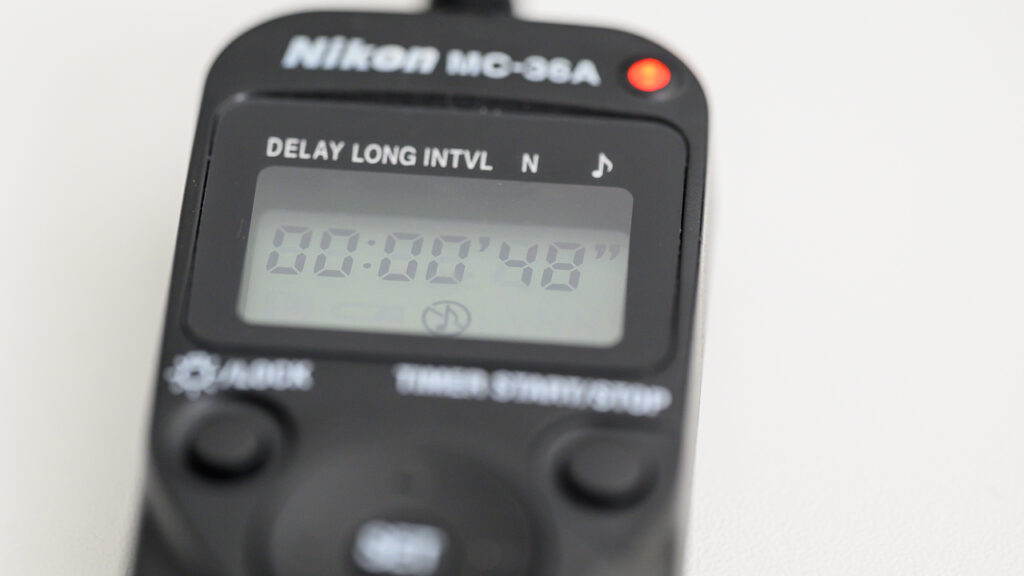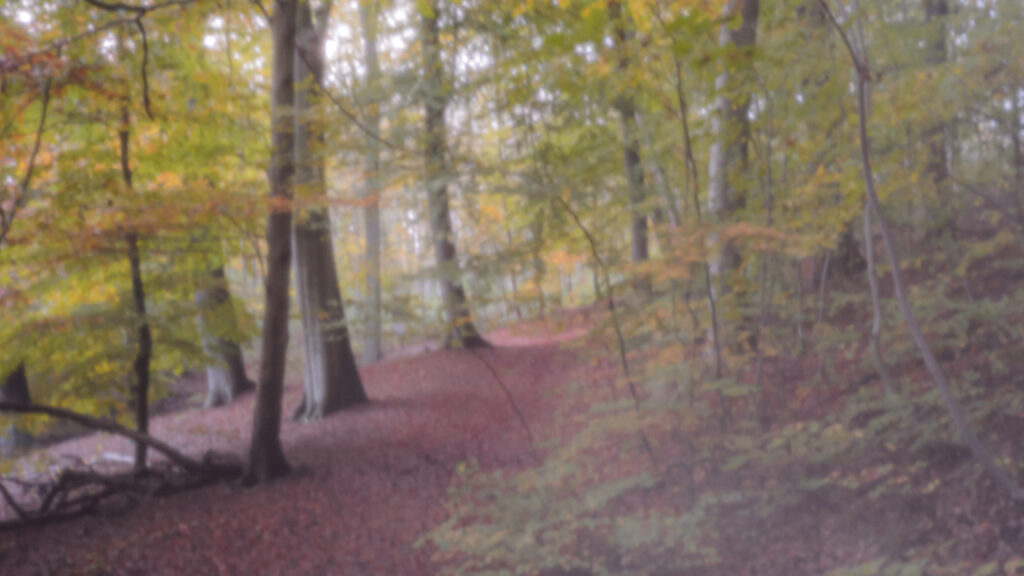No lens!
Pinhole photography is simply that you take the lens off your DSLR or mirrorless camera, and instead block the light from entering where the lens would be mounted, except for a tiny, tiny hole where the light can seep through is very limited amounts.
But why?
Pinhole photography is a nerdy discipline in photography, and certainly not for everyone. It requires long exposures and the images are -due to diffraction – not particularly sharp. But it is a more engaging type of photography, where you will need to spend more time with your camera and you will feel more engaged in the process of shooting, relative to the point-and-shoot like style that most of know from our smartphones..
How?
You need a camera where it is possible to take the lens off. This can be a DSLR or a ML camera, but if you can choose, I would recommend a DSLR, as the sensor is bit better protected behind the mirror than what is the case for a ML camera. You are walking around with a camera with a hole in it after all!

There are a few different ways you can do this, but I prefer to take the lid you use to seal off the camera when no lens is mounted, and drill a small hole in the centre of the lid. This gives a relatively robust solution, should something hit the area where the lens is usually mounted.

Make sure the hole is free from any fragments from the drilling process, so the hole is clean and round. Next, mount a piece of tinfoil on the lid, using a bit of tape. Smart people use tape that is not transparent – from the image above you can see that I am not in that group! And finally, you simply need to take a needle and punch a hole in the tinfoil.
If you want to be very serious about it, you can take a black permanent marker and color the tinfoil black on the side that faces the camera. This way, you minimize reflections on the “inside” of the tinfoil. Needless to say, you need to do this before taping the tinfoil to the lid.
After that, it is simply a question of mounting the lid on the camera, and you are all set! One small thing missing: blocking the viewfinder!

When you are shooting with long exposures, so called false light can enter the camera via the viewfinder, so you need to block it. On some cameras it can be done by flipping a switch next to the viewfinder, if that is not the case for your camera, then you need to block it manually – but please don’t use chewing gum! Yes, seriously, I have seen some photographers do that!
A tripod is (almost) mandatory
Not everyone likes a tripod, but it is necessary to hold the camera still during long exposures. If you don’t have a tripod, try putting the camera on a big stone or a solid fence or whatever is available to you, to secure the camera is still during the exposure.
In my experience, the exposure times for a small pinhole is something along these lines:
- Shooting into the sun: 10 seconds
- Shooting on an overcast day: 20-30 seconds
- Shooting at dusk: around 2 minutes
- Shooting at night: 4+ minutes
I always try to shoot at base ISO, typically 100, but it may vary subject to your camera. If you shoot at higher ISO, the result may be noisy. I will say though that shooting at night will require so long exposures that in those cases I shoot at ISO 400 or 800 simply because my patience does not suffice. But as a general rule, stay at base ISO.
The auto white balance (WB) will struggle to read the light as there is so little of it, and it may be a good idea to set the WB manually. If you shoot RAW, then you can fix this in post, but I try to get my images right in camera as much as possible, and if you like that as well, the manual WB is the way to go.
As there is no lens mounted, you don’t have to worry about the aperture! My guess is that you are shooting at around f/200 – you can do a lot of math to figure this out; I don’t really care. I don’t need to know the exact aperture, and I simply take a few test shots to figure out what a reasonably right exposure time is.
Bulb may be required
It differs from camera to camera, but when you need your shutter to be open for a long time, the camera may not have a pre-defined option for say keeping the shutter open for 1 or 2 minutes. My Nikon D4 stops at 30 seconds, after that, I need to use bulb mode. That means holding down the shutter while the exposure is going on, which I find to be a pain.

So I have bought a remote release, that gives me more options for long exposures than what the camera does.
If you don’t have a remote release or don’t want one, a workaround is to use multiple exposures. Say you ask your camera to expose the same image 5 times. And you set it up to expose each image for 20 seconds. Then the totality of that is a 100 seconds exposure. Only downside is that you will need to hit the shutter 5 times, but it is better than holding it down for 100 seconds, if you ask me.
Is it for you?
In pinhole photography, you are running around with a camera with a hole in it, and that is an invite for dust and dirt to enter. So if you don’t like to clean your sensor, then you probably wanna stay clear of pinhole photography.
Pinhole photography is for long exposures. You cannot shoot anything that moves fast like a cat or a bird in flight. It is mainly for landscapes and stilleben and that kind of images.

But it is a very engaging style of shooting, you cannot see in the viewfinder what the camera will capture prior to hitting the shutter, so there is a bit of guessing and trial-and-error when it comes to pinhole photography. And that has a charm. But it may not charm everyone!
